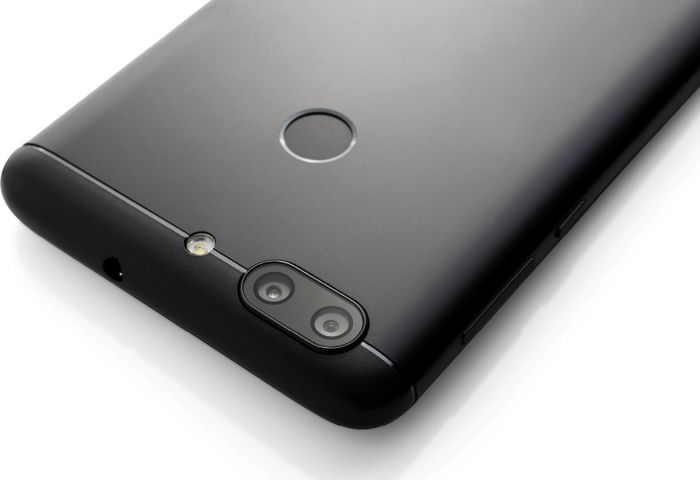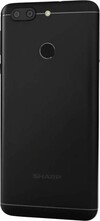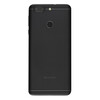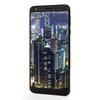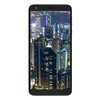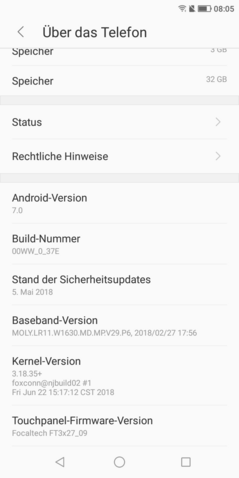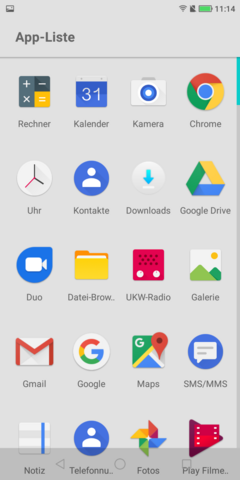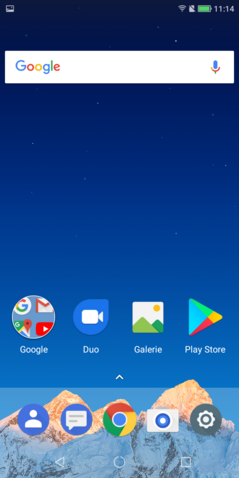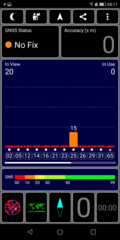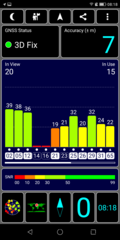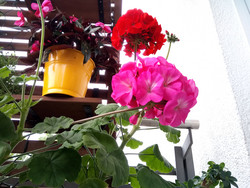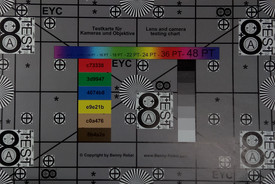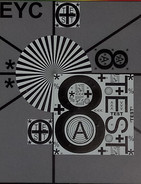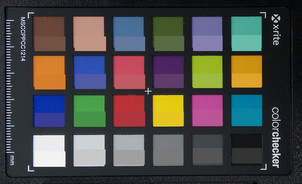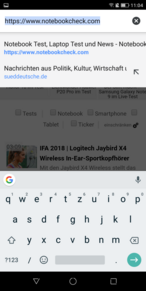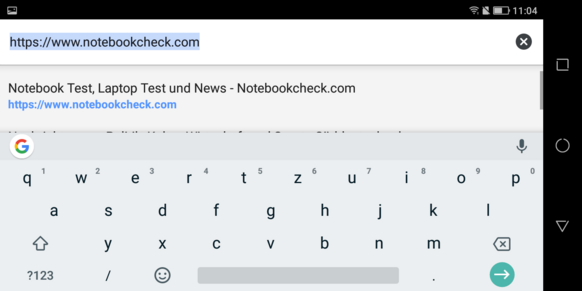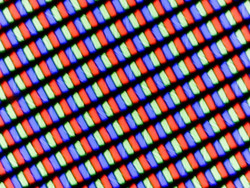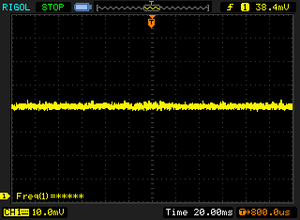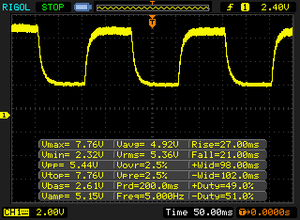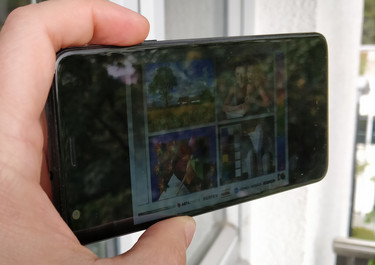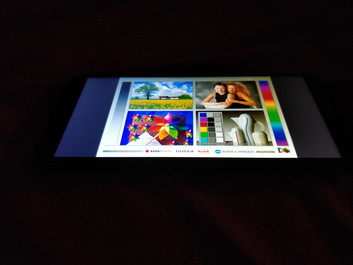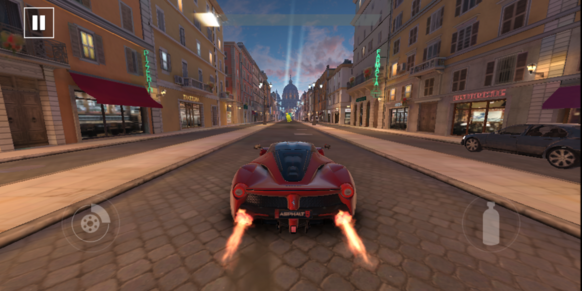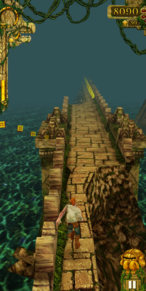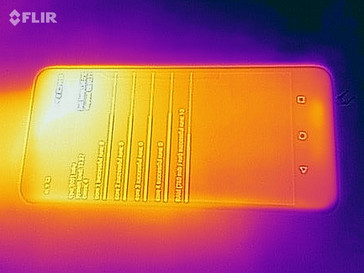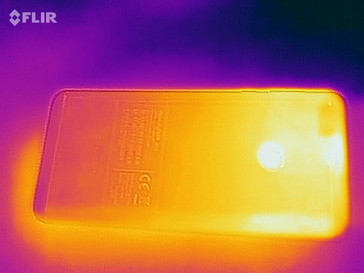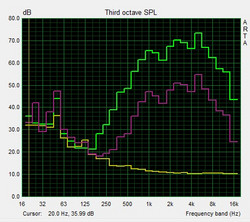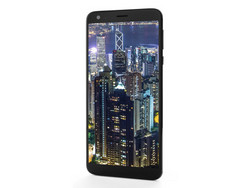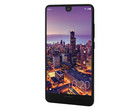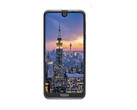Sharp B10 Smartphone Review
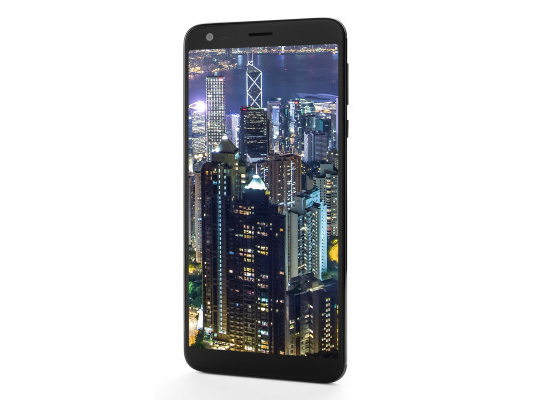
Sharp is back in the Western smartphone market. The Japanese brand is a well-known manufacturer in its homeland, and now two of its smartphones have arrived on the Western market; we already tested the Sharp Aquos C10 and found it to be good. While the Sharp B10 is 100 Euros (~$115) more affordable at 299 Euros (~$345), this is still at the mid-range level as far as the price goes. Anyone looking at the equipment will be disappointed initially: there is no fast ac-WLAN, only 32 GB of storage, and Android 7.0. On the other hand, the smartphone is supposed to convince with a dual camera system and a large battery, so we are curious.
As comparison devices we select the JVC J20, which is slightly more expensive, and also the BQ Aquaris X2, the Honor 10, and the Motorola Moto G6 Plus.
Case – Sharp smartphone with a plastic case
At a thickness of 8.8 mm (~0.35 in), the case of the Sharp B10 is a bit bulkier than the cases of the comparison devices, and you can also notice this when holding the device in your hand. The case is made of plastic, which is surprising for a device costing almost 300 Euros (~$346), but at least there is a metal frame. The black case is modest and the only design highlight is a beveled edge on the metal frame. The back is matte and not very prone to fingerprints. While pressure on the back has no effect on the smartphone, applying medium-strong pressure to the front becomes visible in the liquid crystal of the screen.
Equipment – Small storage for the price
3 GB of RAM and 32 GB of storage are less than in comparable devices, and 4 GB of working memory and 64 GB of storage would have been the standard at this price range. While a microSD card can expand the storage by up to 128 GB, in our test the 64-GB storage card from Toshiba was not recognized, so we had to use a 32-GB model. The card can be formatted as external storage, but you cannot move apps onto it.
Software – Aging Android version on the Sharp B10
A fairly pure version of Android 7.0 is preinstalled on the smartphone, which is an older software version considering the recently published Android 9. In addition, after installing the most current update, the security patches are on the level of May 2018, which is dated at the time of this test. It is not clear whether there will be an update to more current Android versions.
Sharp only made some changes in the visuals, and the Settings look different than in the standard Android. It is laudable that the manufacturer did not preinstall any bloatware, i.e. software from third-party vendors.
Communication and GPS – No fast WLAN and the GPS has problems
The Sharp smartphone does not support WLAN according to the 802.11 ac standard but only supports the older n standard. This also shows immediately in the test with our Linksys EA8500 reference router, where the transfer rates are significantly slower than in all the other comparison devices. Although pages load relatively fast, you have to wait quite long for the pictures.
With six LTE bands, the most necessary are on board, but anyone traveling a lot will not be able to find an LTE connection in many countries. In our short test, the reception quality was decent in the German D2 network, and we had at least half the reception indoors as well.
| Networking | |
| iperf3 transmit AX12 | |
| BQ Aquaris X2 | |
| Motorola Moto G6 Plus | |
| Honor 10 | |
| JVC J20 | |
| Sharp B10 | |
| iperf3 receive AX12 | |
| Motorola Moto G6 Plus | |
| BQ Aquaris X2 | |
| JVC J20 | |
| Honor 10 | |
| Sharp B10 | |
While the GPS module is unable to locate us indoors in rooms with a concrete ceiling, outdoors it quickly finds a GPS signal that locates us at an accuracy of an acceptable seven meters (~23 feet). There is no compass, so that you cannot see your viewing direction in Google Maps. However, the location is quite accurate.
On the other hand, we were unable to get any decent results in our GPS practice test with the Runtastic app, and the GPS did not record our route even after multiple attempts.
Telephone Functions and Voice Quality – The Sharp B10 offers a good voice quality
Strangely the Telephone app is represented by a Contacts icon instead of a phone earpiece. It differs slightly from the standard look of the Google app but offers similar functions. We were unable to find VoLTE support in the software.
The voice quality is quite good. Although there is some slight background noise and our conversation partner does not sound completely clear, we can turn up the volume of the earpiece quite loud without the voice of our conversation partner becoming boomy. Our own voice is transferred clearly and easily understandable. We can also make phone calls with a good quality via the speaker in hands-free mode.
Cameras – A dual camera system with average quality
There is a dual camera system at the back of the Sharp smartphone. The main lens has a resolution of 13 megapixels and the second has a wide-angle characteristic with a resolution of 8 megapixels. You can switch easily and quickly between the two lenses in the app. The detail representation of the main camera is mediocre. Apparently the lens and software have more trouble with red objects in the image calculations, and there is very little detail in the red flowers. In the surrounding image, the details look muddy. There is strong image noise in weak light conditions, but at least the detail reproduction and brightness are decent.
Videos can be recorded in Full HD at 30 FPS. While the colors could have been a bit more vibrant here, the exposure reacts quickly to changing light conditions and details are reproduced fairly well.
The front camera also has a 13 megapixel resolution, but has problems in bright areas which quickly become too bright. Otherwise the color reproduction is vibrant and also fairly rich in detail in terms of its sharpness.
In our lab tests under controlled light conditions, the smartphone reproduces the test chart quite dark. With black text in front of a brown background, you can hardly see a difference anymore. The problems reproducing red areas also show up here, and the text on a red background appears blurry. Areas also appear grainy. While in terms of the color reproduction, the color areas also do not appear very cleanly, the colors themselves correspond relatively accurately to those of the reference color space.
Accessories and Warranty – Standard warranty
The box only includes the charger, a USB cable, and a SIM tool.
Sharp offers a 24-month warranty on its smartphones. Please see our Guarantees, Return policies and Warranties FAQ for country-specific information.
Input Devices and Operation – Easy operation, good fingerprint sensor
Google's GBoard is used as the keyboard app, allowing you to type quickly and smoothly. You can also download and install other keyboard apps from the Google Play Store, if you like.
The touchscreen offers a good surface and can also be operated easily in the corners. The navigation keys for the menus are on the screen, and the only physical buttons are the standby key and volume rocker on the right side. Both can be felt easily and activated precisely.
There is a fingerprint sensor on the back that reliably unlocks the smartphone from standby with minimal delay.
Display – Low resolution, decent brightness
There are only 1440x720 pixels in the 5.7-inch display of the Sharp B10. That is very little for this price range, and all the other smartphones in our comparison offer at least a Full HD resolution that has been expanded to the 2:1 format. At 549 cd/m² on average, at least the brightness is quite decent, but we can also find brighter screens in our comparison here. The brightness distribution is also okay at 90% but is not a top value.
| |||||||||||||||||||||||||
Brightness Distribution: 90 %
Center on Battery: 560 cd/m²
Contrast: 889:1 (Black: 0.63 cd/m²)
ΔE ColorChecker Calman: 5.02 | ∀{0.5-29.43 Ø4.77}
ΔE Greyscale Calman: 4.6 | ∀{0.09-98 Ø5}
89.9% sRGB (Calman 2D)
Gamma: 2.216
CCT: 7587 K
| Sharp B10 IPS, 1440x720, 5.7" | JVC J20 IPS, 2160x1080, 5.7" | Motorola Moto G6 Plus IPS, 2160x1080, 5.9" | BQ Aquaris X2 IPS LCD, 2160x1080, 5.7" | Honor 10 IPS, 2280x1080, 5.8" | |
|---|---|---|---|---|---|
| Screen | -42% | 29% | 3% | 25% | |
| Brightness middle (cd/m²) | 560 | 411 -27% | 761 36% | 631 13% | 555 -1% |
| Brightness (cd/m²) | 549 | 426 -22% | 723 32% | 622 13% | 537 -2% |
| Brightness Distribution (%) | 90 | 82 -9% | 90 0% | 96 7% | 94 4% |
| Black Level * (cd/m²) | 0.63 | 0.53 16% | 0.69 -10% | 0.61 3% | 0.39 38% |
| Contrast (:1) | 889 | 775 -13% | 1103 24% | 1034 16% | 1423 60% |
| Colorchecker dE 2000 * | 5.02 | 8.84 -76% | 2.4 52% | 5.5 -10% | 2.3 54% |
| Colorchecker dE 2000 max. * | 8.71 | 15.08 -73% | 5.2 40% | 8.5 2% | 6 31% |
| Greyscale dE 2000 * | 4.6 | 10.7 -133% | 1.8 61% | 5.6 -22% | 3.9 15% |
| Gamma | 2.216 99% | 2.433 90% | 2.21 100% | 2.38 92% | 2.19 100% |
| CCT | 7587 86% | 10717 61% | 6312 103% | 7531 86% | 6212 105% |
* ... smaller is better
Screen Flickering / PWM (Pulse-Width Modulation)
| Screen flickering / PWM not detected | |||
In comparison: 53 % of all tested devices do not use PWM to dim the display. If PWM was detected, an average of 8084 (minimum: 5 - maximum: 343500) Hz was measured. | |||
We do not detect any PWM flickering. At 0.63 cd/m², the black value is also quite high, causing a significant gray veil in dark areas. The contrast ratio is mediocre at 889:1.
Our tests with the spectral photometer and the CalMAN software reveal a slight blue tint in the display. While the sRGB color space cannot be covered completely, the color deviations remain within limits.
Display Response Times
| ↔ Response Time Black to White | ||
|---|---|---|
| 14 ms ... rise ↗ and fall ↘ combined | ↗ 3 ms rise | |
| ↘ 11 ms fall | ||
| The screen shows good response rates in our tests, but may be too slow for competitive gamers. In comparison, all tested devices range from 0.1 (minimum) to 240 (maximum) ms. » 33 % of all devices are better. This means that the measured response time is better than the average of all tested devices (20.2 ms). | ||
| ↔ Response Time 50% Grey to 80% Grey | ||
| 48 ms ... rise ↗ and fall ↘ combined | ↗ 27 ms rise | |
| ↘ 21 ms fall | ||
| The screen shows slow response rates in our tests and will be unsatisfactory for gamers. In comparison, all tested devices range from 0.165 (minimum) to 636 (maximum) ms. » 82 % of all devices are better. This means that the measured response time is worse than the average of all tested devices (31.6 ms). | ||
Performance – The Sharp B10 is quite slow
The MediaTek MT6750 is a still fairly young SoC that brings hardly any current technology. For example, it is still manufactured in the 28-nm process, which causes it to be less energy-efficient than SoCs that were manufactured using a more modern process. While with 8 cores and 1.5 GHz, the performance potential of the Sharp is not really too small, it still remains in last place far behind the similarly priced comparison devices, and that is the case in all the benchmarks. The ARM Mali-T860 MP2 graphics unit does not fare any better.
| AnTuTu v6 - Total Score (sort by value) | |
| Sharp B10 | |
| JVC J20 | |
| Motorola Moto G6 Plus | |
| BQ Aquaris X2 | |
| Honor 10 | |
| Average Mediatek MT6750 (38547 - 44842, n=17) | |
| AnTuTu v7 - Total Score (sort by value) | |
| Sharp B10 | |
| JVC J20 | |
| Motorola Moto G6 Plus | |
| BQ Aquaris X2 | |
| Honor 10 | |
| Average Mediatek MT6750 (52278 - 56639, n=10) | |
| PCMark for Android | |
| Work performance score (sort by value) | |
| Sharp B10 | |
| JVC J20 | |
| Motorola Moto G6 Plus | |
| BQ Aquaris X2 | |
| Honor 10 | |
| Average Mediatek MT6750 (3667 - 4532, n=13) | |
| Work 2.0 performance score (sort by value) | |
| Sharp B10 | |
| JVC J20 | |
| Motorola Moto G6 Plus | |
| BQ Aquaris X2 | |
| Honor 10 | |
| Average Mediatek MT6750 (2782 - 3394, n=17) | |
| GFXBench (DX / GLBenchmark) 2.7 | |
| T-Rex Onscreen (sort by value) | |
| Sharp B10 | |
| JVC J20 | |
| Motorola Moto G6 Plus | |
| BQ Aquaris X2 | |
| Honor 10 | |
| Average Mediatek MT6750 (12 - 25, n=16) | |
| Average of class Smartphone (12 - 166, n=153, last 2 years) | |
| 1920x1080 T-Rex Offscreen (sort by value) | |
| Sharp B10 | |
| JVC J20 | |
| Motorola Moto G6 Plus | |
| BQ Aquaris X2 | |
| Honor 10 | |
| Average Mediatek MT6750 (12 - 17, n=16) | |
| Average of class Smartphone (22 - 954, n=153, last 2 years) | |
| GFXBench 3.0 | |
| on screen Manhattan Onscreen OGL (sort by value) | |
| Sharp B10 | |
| JVC J20 | |
| Motorola Moto G6 Plus | |
| BQ Aquaris X2 | |
| Honor 10 | |
| Average Mediatek MT6750 (5.6 - 13, n=17) | |
| Average of class Smartphone (18 - 166, n=155, last 2 years) | |
| 1920x1080 1080p Manhattan Offscreen (sort by value) | |
| Sharp B10 | |
| JVC J20 | |
| Motorola Moto G6 Plus | |
| BQ Aquaris X2 | |
| Honor 10 | |
| Average Mediatek MT6750 (5.3 - 7.1, n=17) | |
| Average of class Smartphone (12 - 606, n=154, last 2 years) | |
| GFXBench 3.1 | |
| on screen Manhattan ES 3.1 Onscreen (sort by value) | |
| Sharp B10 | |
| JVC J20 | |
| Motorola Moto G6 Plus | |
| BQ Aquaris X2 | |
| Honor 10 | |
| Average Mediatek MT6750 (3.8 - 10, n=17) | |
| Average of class Smartphone (11 - 166, n=155, last 2 years) | |
| 1920x1080 Manhattan ES 3.1 Offscreen (sort by value) | |
| Sharp B10 | |
| JVC J20 | |
| Motorola Moto G6 Plus | |
| BQ Aquaris X2 | |
| Honor 10 | |
| Average Mediatek MT6750 (3.5 - 4.7, n=17) | |
| Average of class Smartphone (8.4 - 413, n=154, last 2 years) | |
While surfing the Internet, the Sharp B10 also falls behind to the back of the comparison field. While it is quite capable to surf the Internet, you still have to expect longer load times, particularly for images.
| JetStream 1.1 - Total Score | |
| Honor 10 (Chrome 66) | |
| BQ Aquaris X2 (Chrome 67) | |
| JVC J20 (Chrome 68) | |
| Motorola Moto G6 Plus (Chrome 66) | |
| Average Mediatek MT6750 (12 - 20.8, n=19) | |
| Sharp B10 (Chrome 68) | |
| Octane V2 - Total Score | |
| Average of class Smartphone (2228 - 126661, n=194, last 2 years) | |
| Honor 10 (Chrome 66) | |
| BQ Aquaris X2 (Chrome 67) | |
| JVC J20 (Chrome 68) | |
| Motorola Moto G6 Plus (Chrome 66) | |
| Average Mediatek MT6750 (1994 - 3506, n=19) | |
| Sharp B10 (Chrome 68) | |
| Mozilla Kraken 1.1 - Total | |
| Sharp B10 (Chrome 68) | |
| Average Mediatek MT6750 (11708 - 22627, n=19) | |
| Motorola Moto G6 Plus (Chrome 66) | |
| JVC J20 (Chrome 68) | |
| BQ Aquaris X2 | |
| Honor 10 (Chrome 66) | |
| Average of class Smartphone (257 - 28190, n=154, last 2 years) | |
* ... smaller is better
In terms of the storage, our first problem is that it does not recognize our Toshiba Exceria Pro M501 reference storage card. For a 300-Euro (~$346) device such as the Sharp B10, this should not happen. So we are forced to use the much slower Kingston storage card with 32 GB. The access rates are disappointing correspondingly. In terms of its internal storage, the Sharp smartphone also presents itself with slower access than its comparison devices.
| Sharp B10 | JVC J20 | Motorola Moto G6 Plus | BQ Aquaris X2 | Honor 10 | Average 32 GB eMMC Flash | Average of class Smartphone | |
|---|---|---|---|---|---|---|---|
| AndroBench 3-5 | 270% | 346% | 273% | 404% | 224% | 1365% | |
| Sequential Read 256KB (MB/s) | 280.7 | 270.6 -4% | 286.6 2% | 270.5 -4% | 828 195% | 242 ? -14% | 2235 ? 696% |
| Sequential Write 256KB (MB/s) | 100.5 | 199.7 99% | 216.1 115% | 188.7 88% | 192.1 91% | 100.5 ? 0% | 1871 ? 1762% |
| Random Read 4KB (MB/s) | 54.6 | 58.3 7% | 58.4 7% | 43.9 -20% | 145.9 167% | 43.1 ? -21% | 297 ? 444% |
| Random Write 4KB (MB/s) | 12.9 | 6.3 -51% | 62.8 387% | 14.4 12% | 163 1164% | 22.3 ? 73% | 343 ? 2559% |
| Sequential Read 256KB SDCard (MB/s) | 9.83 ? | 82.8 ? 742% | 83.7 ? 751% | 82.9 ? 743% | 71.8 ? 630% | ||
| Sequential Write 256KB SDCard (MB/s) | 6.8 ? | 63 ? 826% | 62.1 ? 813% | 62.3 ? 816% | 52.9 ? 678% |
Games – Current games are playable on the Sharp B10
Thanks to the low resolution, current games such as Asphalt 9 can run on the Sharp B10 and the frame rates are also fairly smooth. However, the selection of graphics interfaces is limited. For example, the graphics unit does not support the modern Vulkan interface, which might create some problems in terms of future proofing. We are able to evaluate the input via position sensor and touchscreen easily in Temple Run. Operation is quite fast and does not represent any limitation during gaming.
Emissions – Not much warming
Temperature
While at a maximum of 42.2 °C (~108 °F) the Sharp B10 does get warm, the warming never becomes uncomfortable, particularly since its location is very limited. During idle operation we hardly notice any warming.
(±) The maximum temperature on the upper side is 41.1 °C / 106 F, compared to the average of 35.2 °C / 95 F, ranging from 21.9 to 247 °C for the class Smartphone.
(±) The bottom heats up to a maximum of 42.2 °C / 108 F, compared to the average of 34 °C / 93 F
(+) In idle usage, the average temperature for the upper side is 30.7 °C / 87 F, compared to the device average of 32.9 °C / 91 F.
Speaker
The volume of the small speaker on the bottom edge of the Sharp smartphone is good, but the sound is very slanted towards the highs and therefore slightly thin. You can hardly hear any deep mids. While this causes voices to sound clear and the speaker does not know any booming, music does not sound very attractive.
There is a 3.5 mm audio port on the bottom edge of the smartphone. Using this or via Bluetooth, you can connect external audio devices which works without any problems and causes the sound to improve significantly.
Sharp B10 audio analysis
(±) | speaker loudness is average but good (79.3 dB)
Bass 100 - 315 Hz
(-) | nearly no bass - on average 59.2% lower than median
(+) | bass is linear (0% delta to prev. frequency)
Mids 400 - 2000 Hz
(-) | nearly no mids - on average 59.2% lower than median
(+) | mids are linear (0% delta to prev. frequency)
Highs 2 - 16 kHz
(-) | nearly no highs - on average 59.2% lower than median
(+) | highs are linear (0% delta to prev. frequency)
Overall 100 - 16.000 Hz
(-) | overall sound is not linear (117.3% difference to median)
Compared to same class
» 87% of all tested devices in this class were better, 7% similar, 6% worse
» The best had a delta of 11%, average was 35%, worst was 134%
Compared to all devices tested
» 96% of all tested devices were better, 2% similar, 2% worse
» The best had a delta of 4%, average was 24%, worst was 134%
JVC J20 audio analysis
(±) | speaker loudness is average but good (81 dB)
Bass 100 - 315 Hz
(-) | nearly no bass - on average 60.9% lower than median
(+) | bass is linear (0% delta to prev. frequency)
Mids 400 - 2000 Hz
(-) | nearly no mids - on average 60.9% lower than median
(+) | mids are linear (0% delta to prev. frequency)
Highs 2 - 16 kHz
(-) | nearly no highs - on average 60.9% lower than median
(+) | highs are linear (0% delta to prev. frequency)
Overall 100 - 16.000 Hz
(-) | overall sound is not linear (121.1% difference to median)
Compared to same class
» 90% of all tested devices in this class were better, 8% similar, 2% worse
» The best had a delta of 11%, average was 35%, worst was 134%
Compared to all devices tested
» 97% of all tested devices were better, 2% similar, 1% worse
» The best had a delta of 4%, average was 24%, worst was 134%
Battery Life – Sharp smartphone with a good battery life
Power Consumption
The Sharp B10 is neither particularly efficient, nor does it consume too much power – instead it levels out at medium values. There are definitely more efficient devices in our comparison. If we consider the lower performance capabilities of the Sharp smartphone, we must say that the power consumption is quite high for this.
| Off / Standby | |
| Idle | |
| Load |
|
Key:
min: | |
| Sharp B10 4000 mAh | JVC J20 3400 mAh | Motorola Moto G6 Plus 3200 mAh | BQ Aquaris X2 3100 mAh | Honor 10 3400 mAh | Average Mediatek MT6750 | Average of class Smartphone | |
|---|---|---|---|---|---|---|---|
| Power Consumption | 10% | 31% | 13% | -4% | 0% | -1% | |
| Idle Minimum * (Watt) | 1 | 1 -0% | 0.5 50% | 0.65 35% | 1.12 -12% | 1.13 ? -13% | 0.847 ? 15% |
| Idle Average * (Watt) | 1.98 | 1.6 19% | 1.78 10% | 2.24 -13% | 2.26 -14% | 2.02 ? -2% | 1.448 ? 27% |
| Idle Maximum * (Watt) | 2.5 | 2.8 -12% | 1.81 28% | 2.26 10% | 2.3 8% | 2.42 ? 3% | 1.633 ? 35% |
| Load Average * (Watt) | 5.3 | 4 25% | 3.3 38% | 3.87 27% | 5.14 3% | 5.21 ? 2% | 6.96 ? -31% |
| Load Maximum * (Watt) | 7.4 | 5.9 20% | 5.14 31% | 6.8 8% | 7.89 -7% | 6.56 ? 11% | 11.3 ? -53% |
* ... smaller is better
Battery Life
Lasting 15:03 hours in our WLAN test, the Sharp B10 strikes a very good figure in terms of its battery life. The strong battery with 4000 mAh is responsible for this, which theoretically allows it to even last for almost two workdays of constant usage. So in everyday use, you do not need to look for an outlet all of the time.
Quick Charge is supported, and the included charger completely recharges the battery in slightly less than two hours.
| Sharp B10 4000 mAh | JVC J20 3400 mAh | Motorola Moto G6 Plus 3200 mAh | BQ Aquaris X2 3100 mAh | Honor 10 3400 mAh | |
|---|---|---|---|---|---|
| Battery runtime | -20% | -23% | -32% | -26% | |
| WiFi v1.3 (h) | 15.1 | 12.1 -20% | 11.7 -23% | 10.3 -32% | 11.1 -26% |
| Reader / Idle (h) | 30.8 | 19.4 | |||
| H.264 (h) | 9 | 11 | |||
| Load (h) | 6.7 | 3.6 |
Pros
Cons
Verdict – Too much money for too little smartphone
At the time of our testing, there are not really any price drops for the Sharp B10 yet, and most vendors still charge 299 Euros (~$345) for the smartphone. In our opinion this is quite a lot for what it offers: a quite small storage, a comparatively slow SoC, fairly slow WLAN, problematic GPS and then there is also only a bland plastic case.
In addition, there is no information on an update to Android 8 or even 9, and at the time of the test the security patches are already quite old. We could live with that for 100 Euros (~$115) less, but the 300-Euro (~$346) price range offers so many good smartphones at this point, that the Sharp B10 will really have a hard time at that price.
The good battery life, the decent voice quality, and the low temperature development are positive aspects. The display also offers fairly decent measurement results, but at 1440x720 pixels, the resolution is much too small for this price range.
At 300 Euros (~$346), the Sharp B10 is too expensive, despite its good battery life. Even if you can get it for cheaper, you still have to live with some problems.
The Sharp B10 also surprises us with its bad price-performance ratio, since the Sharp Aquos C10 was a good smartphone. At least you should hold off purchasing the Sharp B10 until the price drops.
Due to the bad price-performance ratio and the problems with the microSD and GPS, we deduct two percentage points.
Sharp B10
- 09/03/2018 v6 (old)
Florian Wimmer




